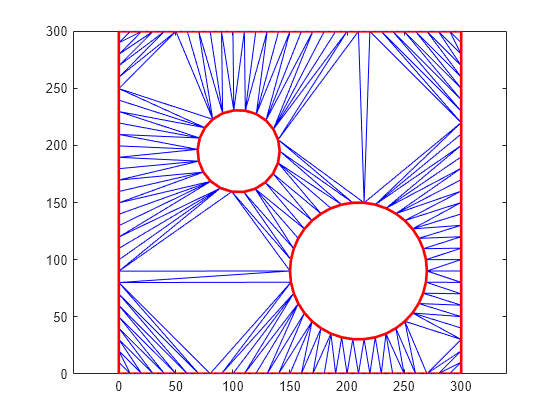TriRep
(Not recommended) Triangulation representation
TriRep is not recommended. Use triangulation instead.
Description
TriRep provides topological and geometric
queries for triangulations in 2-D and 3-D space. For example, for triangular meshes you can
query triangles attached to a vertex, triangles that share an edge, neighbor information,
circumcenters, or other features. You can create a TriRep
directly using existing triangulation data. Alternatively, you can create a Delaunay
triangulation, via DelaunayTri, which also provides access to the TriRep functionality.
Creation
Description
Input Arguments
Properties
Object Functions
In addition to the below object functions, TriRep
objects support indexing into the triangulation using parentheses (). The
syntax is the same as for arrays.
baryToCart | (Not recommended) Convert point coordinates from barycentric to Cartesian |
cartToBary | (Not recommended) Convert point coordinates from Cartesian to barycentric |
circumcenters | (Not recommended) Circumcenters of specified simplices |
edgeAttachments | (Not recommended) Triangles or tetrahedra attached to specified edge |
edges | (Not recommended) Triangulation edges |
faceNormals | (Not recommended) Unit normals to specified triangles |
featureEdges | (Not recommended) Sharp edges of surface triangulation |
freeBoundary | (Not recommended) Free boundary facets |
incenters | (Not recommended) Incenters of specified simplices |
isEdge | (Not recommended) Test if vertices are joined by edge |
neighbors | (Not recommended) Triangle or tetrahedron neighbors |
size | (Not recommended) Size of triangulation matrix |
vertexAttachments | (Not recommended) Triangles or tetrahedra attached to vertex |
Examples
Version History
Introduced in R2009a
See Also
triangulation | delaunayTriangulation | scatteredInterpolant

